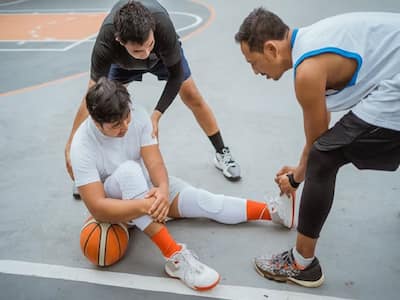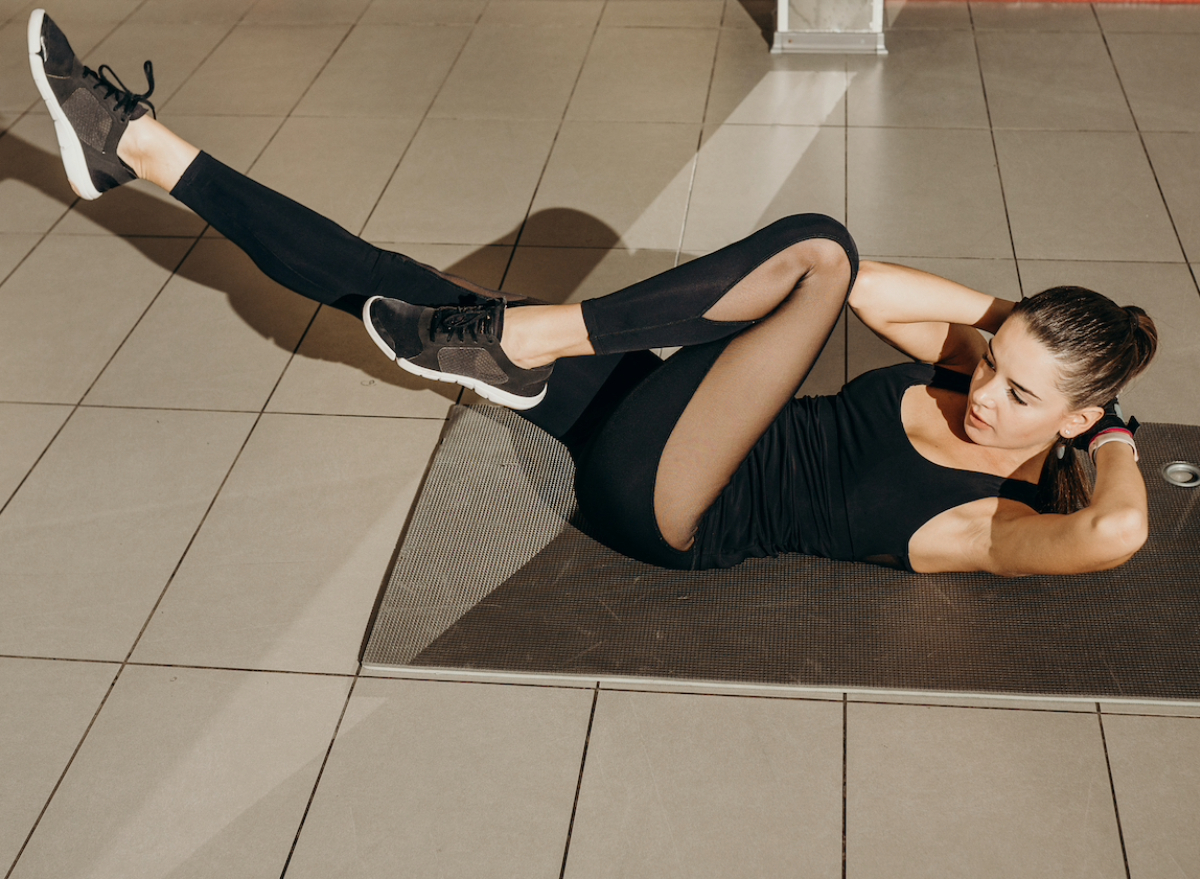
Injury is intrinsic to sport; it can be minimized but may not be possible to prevent it completely. Here are the golden rules to minimize sports injuries.
Sports injuries occur when participating in athletic activities, exercise, or sports and cause harm to a specific body part. These injuries can happen suddenly or gradually over time. People of all ages, from children to adults, are susceptible to sports injuries. It is crucial to promptly seek intervention and implement preventive measures for sports injuries.
Dr. Dilip V. Nadkarni, MS Orthopedics, Lilavati Hospital Mumbai, says,“Whether it is professional sport or recreational sport, injury happens. Whether it is for fame or money or pure passion, a sports person often stretches the limits of human endurance, which could result in sports injury. It could be an on-field collision in football or a twisted knee in Badminton. The result is that vital structures like our bones, joints or spine could suffer trauma, which if not treated properly could end the career of the sports person.”
The expert tells us more about sports injuries, including the causes, treatment options, prevention tips and more.
What are the causes of sports injury?
There are extrinsic causes or intrinsic causes of sports injuries. Extrinsic causes are those due to external factors like bad weather or faulty footwear or equipment. Intrinsic causes are usually fitness or technique related. If our fitness levels do not conform to the requirements of a particular sport, we invite injuries. Faulty techniques, like improper body weight transfer in sports like tennis or golf could result in injuries. If proper warm-up and stretching is not performed before a sporting activity, one could get injured. Pre-existing physical conditions like hyper-elastic joints could predispose injury.
What are overuse Injuries?
Overuse can be of two types. Overtraining with too much intensity or training for excessive periods of time. Both can usher in injuries. Setting unrealistic targets and keeping hectic training schedules to try and attain these targets could cause injuries.
What are acute and chronic sports injuries?
Acute sports injuries are sudden events like a dislocated shoulder on the sports field or at a Mixed Martial Arts (MMA) event. I have been summoned at the sports arena many times where I have put the shoulder back in place. Acute injuries cause sharp pain and disability, and the sports person might need to be taken off on a stretcher.
Chronic sports injuries occur over time after repeated minor injuries. A Stress Fracture in the shin is a classic example of a chronic sports injury. Apart from first aid on the field, these injuries require prolonged patient rehabilitation.
What are the common sports injuries?
The commonest sports injuries involve the Knee, Shoulder, Ankle and Back. In my practice, Knee Ligament and Meniscal injuries top the list. These are followed by Shoulder dislocations and Rotator cuff tears, Prolapsed disc in the spine and Ankle ligament tears. Among the chronic sports injuries Tennis Elbow, shin stress fractures, Jumper’s Knee and Achilles tendonitis are common.
How to treat an injury on the sports field?
It is essential that the Coaches and Parents of sports persons know how to give first aid on the field when an injury occurs. We train the community to provide R.I.C.E.
R for Rest: It is essential to take a break when you are injured. Rest today to Play another day.
I for Ice: Cold packs prevent swelling and inflammation.
C for Compression: A crepe bandage or a splint will protect the injured part and help minimize the effects of the injury.
E for Elevation: Elevation of the injured limb will use gravity to avoid stagnation of blood in the injured area.
How to diagnose and assess the degree of sports injury?
It is vital to assess the type and severity of the sports injury. Often, we Doctors are asked to judge whether the sports person is fit to resume sport after injury. A thorough physical examination reveals whether there is joint instability. Signs like restriction of joint movement, abnormal sounds from the joint and painful swelling usually need further investigation.
READ RELATED: How To Avoid Wrist Injuries While Lifting Weights?
With modern imaging techniques like CT scan and MRI, most bone and joint injuries can be diagnosed and graded. The Fitness is assessed with on field tests for endurance, speed, and functionality, before the player is declared fit.
How are sports injuries managed?
Sports injuries can be managed conservatively or non-surgically most of the time. If there is a fracture, a cast is applied. An ankle brace is given for a ligament tear in the ankle. Bed rest is recommended or prolapsed Discs in the spine. Once the acute injury has healed, Physiotherapy is the mainstay of the treatment.
What is the role of physiotherapy in sports injury?
Physiotherapy is the backbone of rehabilitation of an injured sports person. Whether it is the first line of treatment or rehab after surgery, physiotherapy paves the way for return to sporting action. Physiotherapy provides a protocol for Exercises to regain flexibility, workouts to gain strength and agility in the athlete. Pain relieving modalities too are very helpful.
What are the common surgeries performed for Sports Injuries?
Arthroscopic Surgery is the cornerstone in the surgical management for sports injuries to the joints. Minimally invasive spine surgery, surgery for fracture fixation and tendon repairs are other common surgeries in sports injury. Joint replacement surgery especially in the senior sports person, helps conditions like knee degenerative arthritis.
What is Arthroscopic Surgery?
Literally ‘Arthro’ means Joint and ‘scopy’ denotes looking in. Arthroscopic Surgery is a type of keyhole surgery where an endoscope looks into a joint, diagnosis is achieved, and therapeutic action is taken at the same time. The most common arthroscopic surgery is performed on Meniscal tears. Meniscus is the shock absorber in the knee, which is commonly torn in sports. The meniscal tears can be successfully set right arthroscopically, and the sports person returns to action in quick time. Ligament injuries are also very common in the knee particularly to the Anterior Cruciate Ligament (ACL). Arthroscopic ACL reconstruction has proved very successful in Knee injuries.
Arthroscopic surgery works very well in recurrent Shoulder Dislocations. The shoulder is stabilized by arthroscopically where the torn tissues are anchored back in place. The Rotator Cuff is also commonly injured in sports, which involve a throwing action. Arthroscopic Cuff Repairworks wonders in such cases.
What is the role of injections in the tissues or joints in sports injuries?
Cortisone injections in the conditions like Tennis Elbow, Golfers’ Elbow or tendinitis in the shoulder have been used with some success in the past. Currently regenerative modalities include injections of Platelet Rich Plasma (PRP). Initial studies are quite encouraging, since the side effects are minimal and tissue healing has been demonstrated. Early days, but PRP could be a promising prospect for the future.
How to prevent sports injury?
Injury is intrinsic to sport; it can be minimized but complete prevention will be asking for too much. The glamour, the money, the TV exposure, make today’s athlete strive very hard to reach the top. Over training, crowded calendar, taking risks on the field all contribute to increasing incidence of injury in sports. The recreational athlete too is not spared. Trying to achieve super fitness with a poor body condition leads to injuries in the recreational sportspersons. Then there are cases of Weekend Warriors, who relax the whole week and cram all the exercise in the weekend, which takes a toll on their bodies.
The golden rules to minimize sports injuries are as follows:
- Work on Flexibility scientifically: Engage a sports specific trainer to work on your Flexibility needed for your sport.
- Strengthening Exercises: Sport specific muscle strengthening exercises are the key to fitness for your sport. A footballer works hard on the quadriceps or thigh muscles, which protect the knees.
- Use proper technique: Just as the trainer ensures Fitness, a coach who imparts the correct biomechanics is very important. The correct grip, the stance, the posture, the swing in cricket or golf cannot be over stressed.
- Listen to your body: Many times, our body gives a feedback that it is being abused. Avoid Overuse, take a break!
- Correct Footwear: Please wear Running shoes for Running and Tennis Shoes for Tennis. The shoe industry is spending millions to give you the optimum shoe for your sport.
- Yoga: A stress free mind combined with a strong flexible body has less chance of Injury. Yoga gives us all these features on a platter.
- Nutrition and Hydration: A poorly nourished and dehydrated body invites injury. Correct Diet goes a long way in making us strong and light, Fit for sport.
- Optimum weight: A high BMI makes us prone to injury. The high torque of the heavy body can damage our joints and create bad injuries. A combination of diet and aerobic exercise can help us keep our body weight in check.
- Core Muscle Strengthening: Most sports and athletic activity need a strong Core and Back strength. Please do not neglect these areas, which help us keep good posture and coordination.
- Warm up and Cool down: Follow a pre-game routine, where you acclimatize our body for the action to come. Gentle warm up followed by stretches are a great way to begin your sporting schedule. Cool down exercises after the game, help us to recover from the rigors of the sport.
Yes, Sport needs Medicine to prevent and treat injuries, improve our performance, keep cool and have a strong healthy body. On the other hand, it is safe to say that Sport is Medicine, a way of life to keep fit and enjoy life.
Total Wellness is now just a click away.
Follow us on
Don’t Miss Out on the Latest Updates.
Subscribe to Our Newsletter Today!
window.addEventListener(‘load’, (event) => {
$(‘#commentbtn’).on(“click”,function(){
(function(d, s, id) { var js, fjs = d.getElementsByTagName(s)[0]; if (d.getElementById(id)) return; js = d.createElement(s); js.id = id; js.src = “//connect.facebook.net/en_US/sdk.js#xfbml=1&version=v2.3”; fjs.parentNode.insertBefore(js, fjs);}(document, ‘script’, ‘facebook-jssdk’));
$(“.cmntbox”).toggle();
});
});






